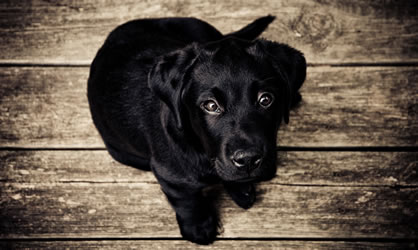How to Cure Separation Anxiety
Separation anxiety is among the most common afflictions that plague family dogs. It’s an affliction because it’s a very real psychological condition that produces suffering. If it isn’t addressed and becomes chronic, it will seriously disrupt family life. It too often results in a sad trip to the local animal shelter.
The irony is that the deep bonding and devotion that we desire and do so much to encourage is at the root of the malady. When it’s necessary to leave your dog alone, you too can experience a degree of anxiety over the separation. We may even feel guilty. So, it’s not unusual if your dog to senses that, further aggravating its anxiety.
When you leave you know how long you will be gone and when you will be back. Even if that information would ease your dog’s fear, there is no way to explicitly communicate it. Perhaps after your dog observes your routines, it will discover clues that it can use to better understand that there is nothing to worry. But that doesn’t solve the immediate problem.
Another factor that can aggravate situation is if you try to comfort your dog just before you leave. This behavior will almost certainly backfire. It sends the message to your dog that separation is imminent, which only heightens the anxiety.
The best course of action is to be casual when you leave. You should completely ignore your dog. Your departure should be no different than walking out of the room and then returning. The more casual you are the more relaxed your dog will be. However, that’s only half of the solution, since your dog will still feel the pain of separation when you go away.
The trick is to teach your dog that your goings and comings are no big deal. Start the lessons by quietly walking out the door while ignoring your dog, as described. Return in 5 seconds or less, hopefully before your dog has a chance to bark. Wait awhile and settle down so your dog can return to a normal secure state of mind. Repeat this process over and over, gradually increasing the time you spend outside. It helps if you’ve already taught your dog not to bark. You don’t want to accidentally teach it that barking will bring you back. The point is to keep your dog calm while you are away for longer and longer periods. Dishing out praise, even when your dog is behaving, might actually increase the anxiety. The only recognition you should give your dog is to tell it not to bark or correct some other misbehavior. Success requires more firmness than sympathy.
It will take time for your dog to treat your departures as ordinary and unexciting. If you stick with this plan, eventually you will be able to drive away and return hours later without any problems.
Exercising your dog and giving it a bathroom break before you begin your lessons is a good idea. While you’re away your dog should have its toys, food, and water to keep it occupied. Other tricks like leaving the TV or radio on usually help, too.

Comments are closed.